Embark on a breathtaking journey across Europe. This is a continent brimming with history and unparalleled beauty unlike anything else in the world. Be captivated by its enchanting fairytale castles to adrenaline-pumping mountains. Be awed by its diverse wildlife to pulsating nightlife. Europe is definitely an explorer’s paradise.
On traversing this remarkable land, you’ll encounter a fascinating blend of modernity and ancient roots. This is the land where diverse cultures and architectural marvels transport you to bygone eras.
But what sets Europe apart is its awe-inspiring natural splendor. Come fall in love with the mesmerizing turquoise seas. Be wonderstruck by the Alpine peaks, lush coastal landscapes, and majestic caves.
European caves are nature’s masterpieces, showcasing her unparalleled artistry and creativity. In this article, we’ll guide you through 10 amazing European caves. This list will include popular hotspots to hidden gems that will leave you utterly spellbound.
1. Blue Cave, Croatia
Discover the Blue Cave, an awe-inspiring natural wonder nestled in Croatia’s Adriatic Bay of Balun on Biševo Island. Just 5 miles from Komiža, Vis, and 111 miles from Split, this breathtaking geomorphological gem is easily accessible.
The Blue Cave’s historical significance dates back to the 19th century when Baron Eugen von Ransonnet first discovered it. Since then, it has captured the imagination of travelers worldwide. It has become an essential stop on any Croatian adventure.
Reaching the Blue Cave is an adventure in itself. Start your journey from Split or Hvar, where numerous tour operators offer group and private excursions. Choose a group tour for a budget-friendly experience, or indulge in a private tour for a more intimate exploration.
Upon arrival, prepare to be awed by the cave’s hidden treasures. To truly appreciate its beauty, visit between 11 AM and 12 PM when sunlight filters through the water, creating a mesmerizing blue hue. Take the opportunity to capture stunning photographs as you float through the illuminated chamber.
Venture deeper into the cave to uncover its lesser-known secrets. The intricate limestone formations and the elusive Mediterranean monk seal, a rare species that occasionally calls the Blue Cave home, are sights that enthrall.
As you leave the Blue Cave, take a moment to appreciate this unforgettable experience. The Blue Cave is a must-visit destination for anyone exploring the wonders of Croatia.
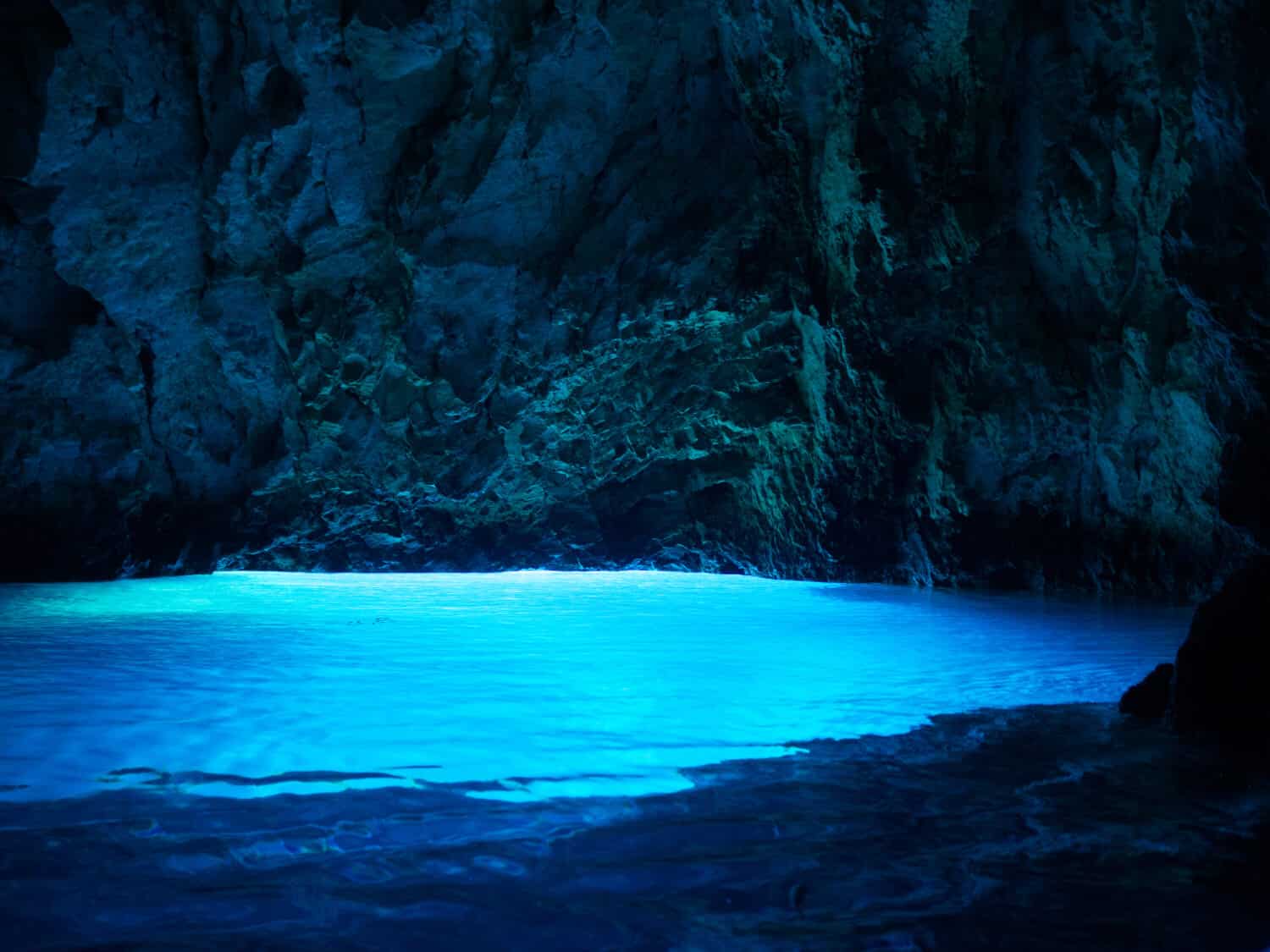
The Blue Cave is a Croatian gem with a rich history and global allure, beckoning adventurers to explore its mystique.
©bkolodziej/Shutterstock.com
2. Gouffre de Padirac, France
Gouffre de Padirac, a breathtaking cave in France, ranks among Europe’s most impressive caves. Discovered by renowned explorer Edouard Martel, it has welcomed over 24 million visitors since 1899. Locals once called this mesmerizing chasm the devil’s hole.
Peering down into the 75-meter deep and 33-meter vast abyss, you can’t help but marvel at its enormity. Millennia of underground water erosion has sculpted a labyrinth of caverns adorned with vast stalactites and stalagmites beneath the limestone surface.
To explore this subterranean wonder, descend via an Eiffel Tower-inspired metal staircase or a lift. Once at the bottom, look up to see the distant circle of sky above. The Gouffre is open daily from Easter until early November, with varying schedules throughout the season. Rem
ember, the cave remains a cool 55°F-57°F, so dress accordingly.
English-speaking guides are available upon request, and though the tour includes climbing around 200 steps, lifts are provided for those with mobility issues. It is an experience that is fascinating for all ages. However, the Gouffre does not permit pets.
As a popular Dordogne Valley attraction, expect long queues in July and August. Booking online is highly recommended, and you can use your mobile flash code for ticket entry.
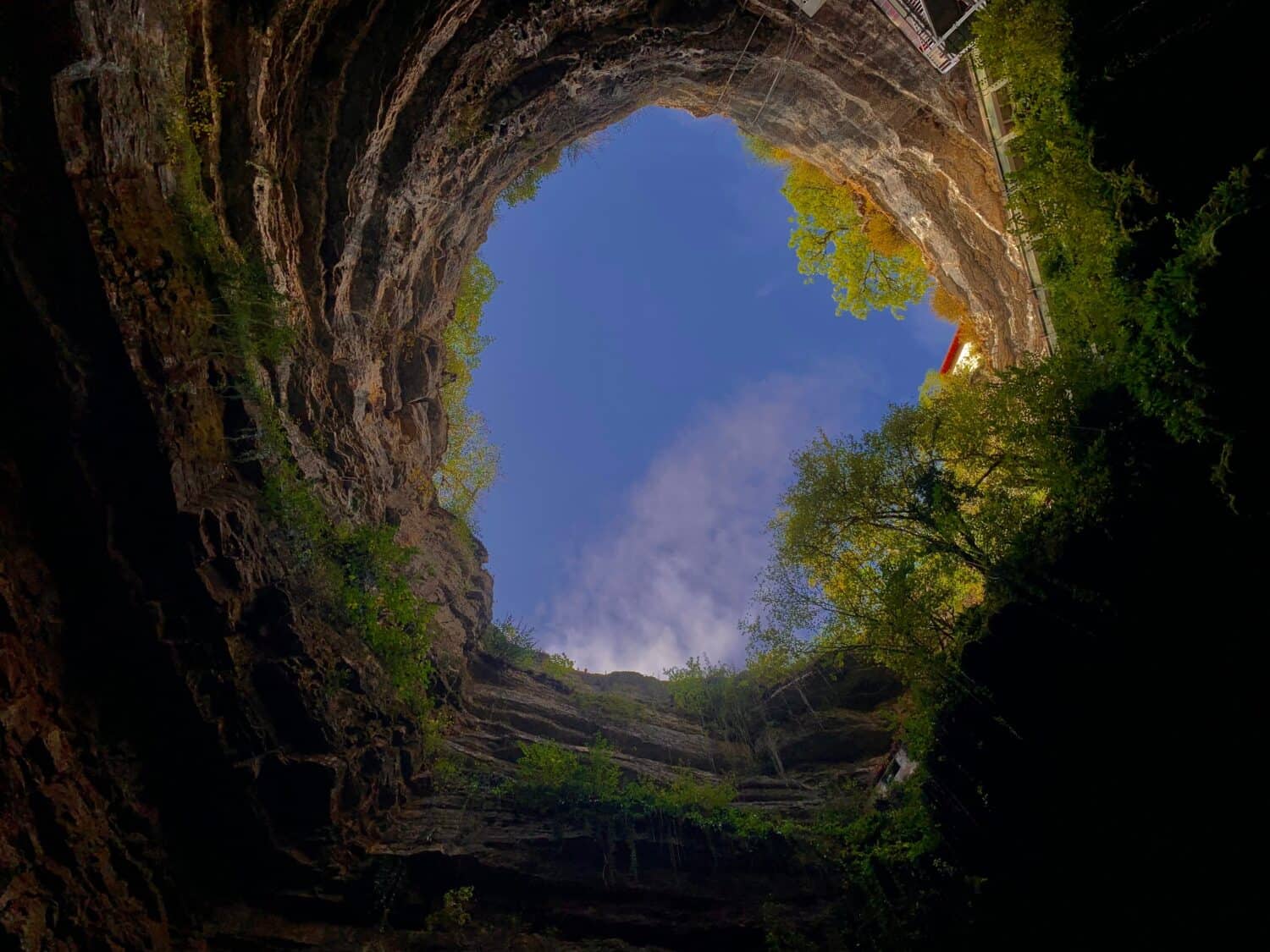
The Gouffre de was once called the Devils hole and has welcomed over 24 million visitors since 1899.
©krissssssk/Shutterstock.com
3. The Blue Grotto, Italy
The Blue Grotto, a natural sea cave in a mountain, is 60 meters long and 25 meters wide. Accessible only through a narrow two-meter-wide opening at water level, you’ll need to board a small wooden rowboat to enter. With a maximum capacity of four passengers, be prepared to duck your head and lay back as the captain pulls you into the cave using chains attached to the rocky walls.
Once inside, you’ll immediately notice the stark contrast between the chaos of boats waiting outside and the serene, azure blue waters within. The sunlight illuminates the water, creating a stunning effect every traveler must see. A visit to Capri is complete only with a stop at the Blue Grotto.
Capri is a breathtaking island with white rocky cliffs plunging into the turquoise ocean waters. Boasting several attractions, including the White, Green, and Blue Grottos, the Blue Grotto is undeniably the most impressive. If time permits, take a private boat tour around the island to explore the caves.
To reach the Blue Grotto, you have several options:
- Tour boat: Purchase tickets for an island tour by sea or a roundtrip ticket to the Blue Grotto at Marina Grande’s port from Motoscafisti and Laser Capri charter companies. The “Island Tour by Sea + Stop at the Grotto” option includes a complete island tour and a stop at the Blue Grotto entrance, where you’ll switch to a small rowboat to enter the cave.
- Private boat: If you have a private yacht, anchor near the cave and signal a waiting rowboat for pickup. Alternatively, hire a private gozzo with a skipper from Marina Grande. These traditional island boats accommodate up to seven passengers and offer a two-hour tour.
- Walking or by bus: From Anacapri’s center, walk down Via Pagliaro and Via Grotta Azzurra (3.5 km). Alternatively, take a public bus from Piazza della Pace. Disembark at the final stop and descend the stairs to the seaside rowboat queue. A small concession stand along the stairs sells drinks, snacks, and souvenirs during summer.
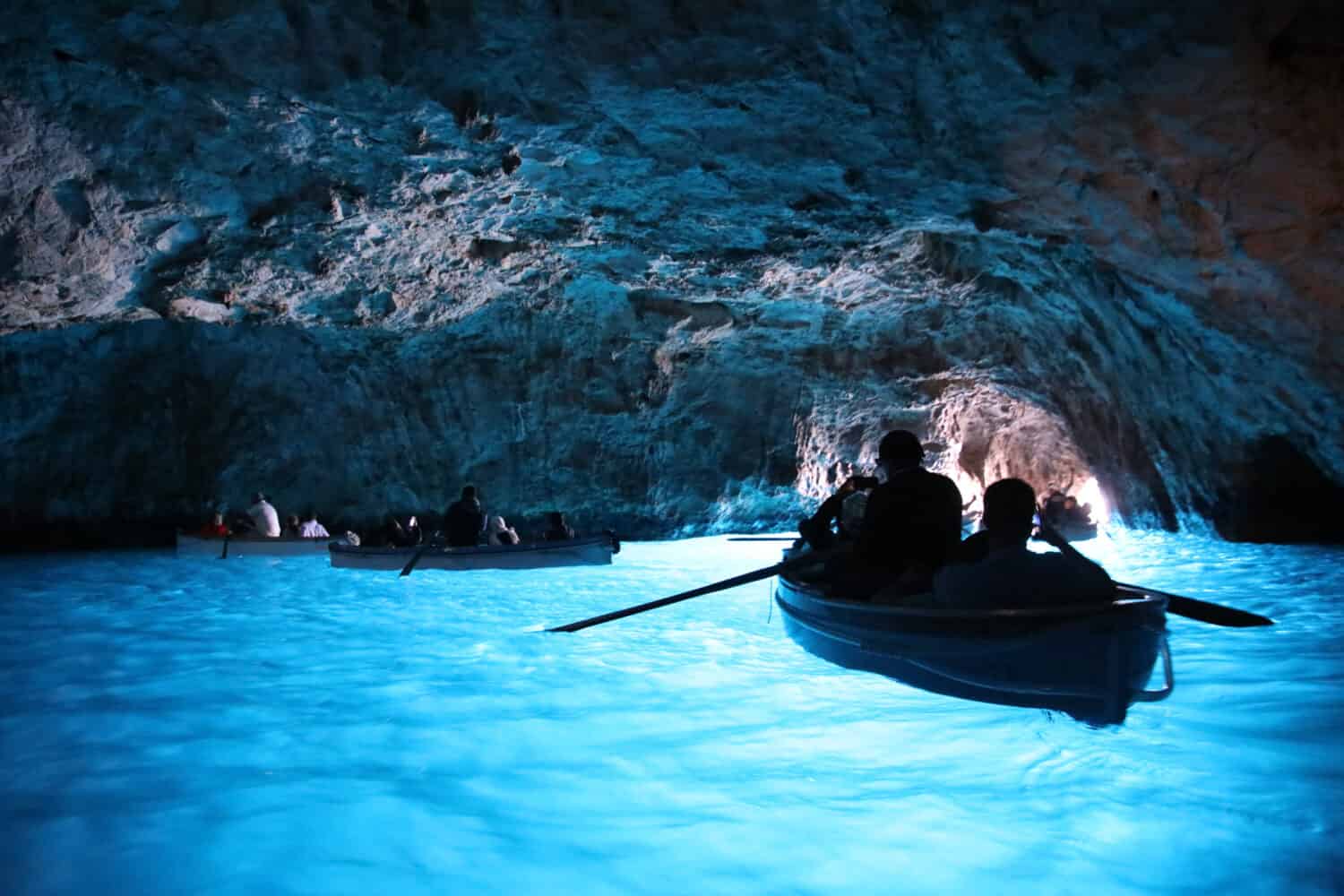
The Blue Grotto is a natural sea cave in a mountain measuring 60 meters long and 25 meters wide.
©takmat71/Shutterstock.com
4. Lascaux Cave, France
Venture to the Lascaux Cave in France, a true gem among Europe’s amazing caves. Nestled in the Périgord region, this prehistoric marvel awaits you in the picturesque Dordogne Valley. As a UNESCO World Heritage Site, Lascaux offers a captivating journey to the dawn of life on Earth.
Located in Montignac-Lascaux, this fantastic cave showcases exceptional Upper Paleolithic art.
With an impressive number and artistic quality, it’s often dubbed “the Sistine Chapel of cave art.” Four local teenagers unearthed the entrance in 1940, revealing the breathtaking paintings left by our Cro-Magnon ancestors.
Regrettably, the original cave remains closed to the public for preservation reasons. Fear not, though, as a meticulously crafted reconstruction now awaits visitors. Embrace the opportunity to witness these ancient masterpieces and immerse yourself in the wonders of Lascaux while exploring Europe’s incredible caves.
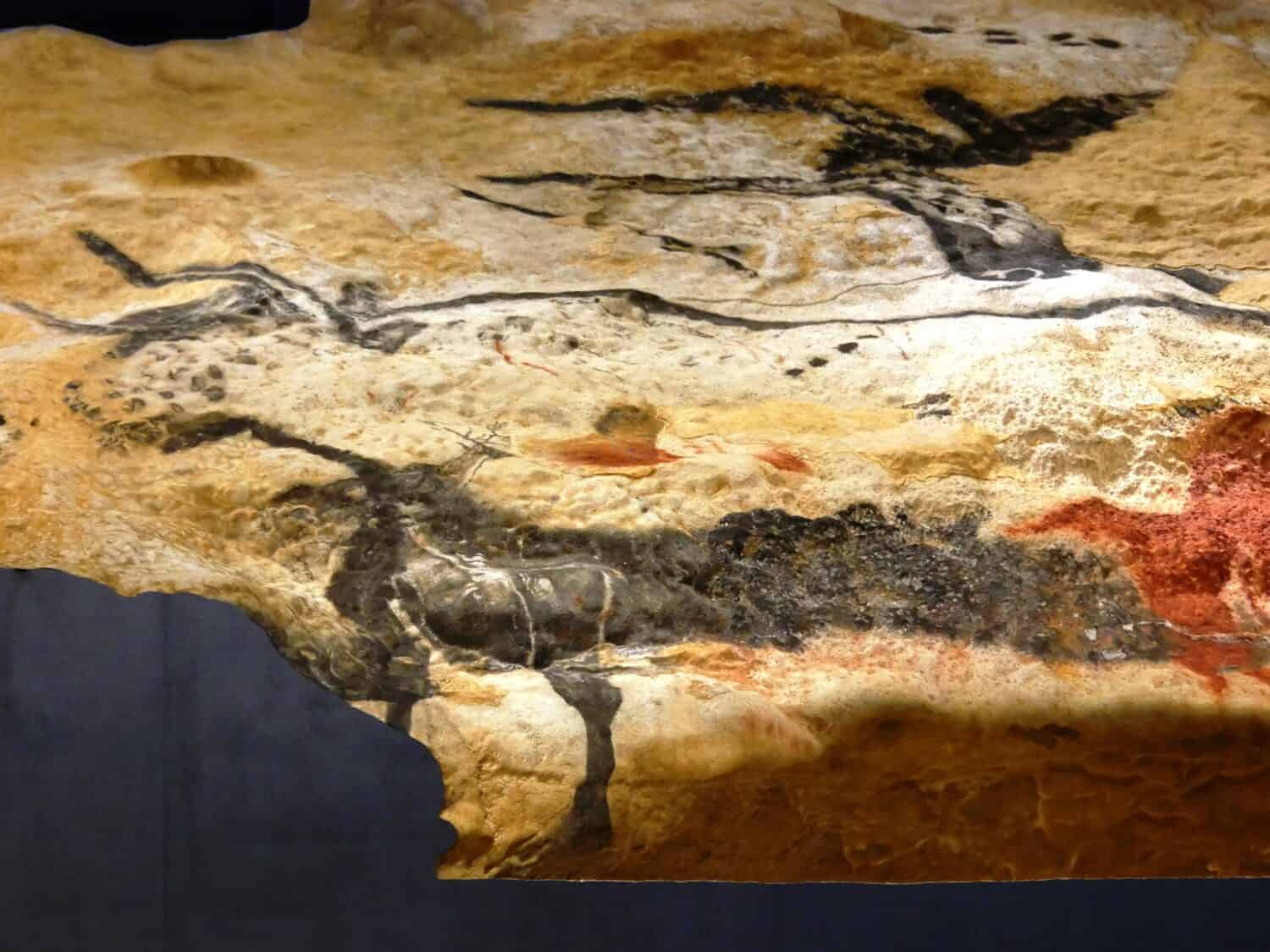
The Lascaux Cave is a UNESCO world heritage site that showcases exceptional Upper Paleolithic art.
©LACROIX CHRISTINE/Shutterstock.com
5. Marble Arch Caves, Northern Ireland
Located in the scenic foothills of Cuilcagh Mountain, the Marble Arch Caves are a must-visit attraction. Just a short trip from Enniskillen in County Fermanagh, Northern Ireland, these caves offer a fantastic experience for visitors.
Formed over 340 million years ago, the landscape surrounding the Marble Arch Caves boasts the following:
- Caves
- Rivers
- Mountains
- Ancient woodlands
- Waterfalls
- Gorges
Fermanagh’s lush hills conceal a hidden world of caves, sinkholes, and underground rivers, inviting exploration and discovery. The Marble Arch Caves stand out as the most active river show cave in Ireland and the UK and are a key site within the Cuilcagh Lakelands UNESCO Global Geopark.
Embark on a guided cave tour to comfortably traverse the Marble Arch Caves along carefully constructed paths. Discreet lighting showcases the delicate cave formations while enthusiastic guides lead you through awe-inspiring passages, interpreting the stories of this wondrous show cave.
Beyond the caves, explore the captivating landscape that surrounds them. Rivers, gorges, waterfalls, mountains, and ancient woodlands provide the perfect backdrop for adventure. The Marble Arch Caves Visitor Centre offers guided walks, family activities, and events to help you explore this enchanting setting.
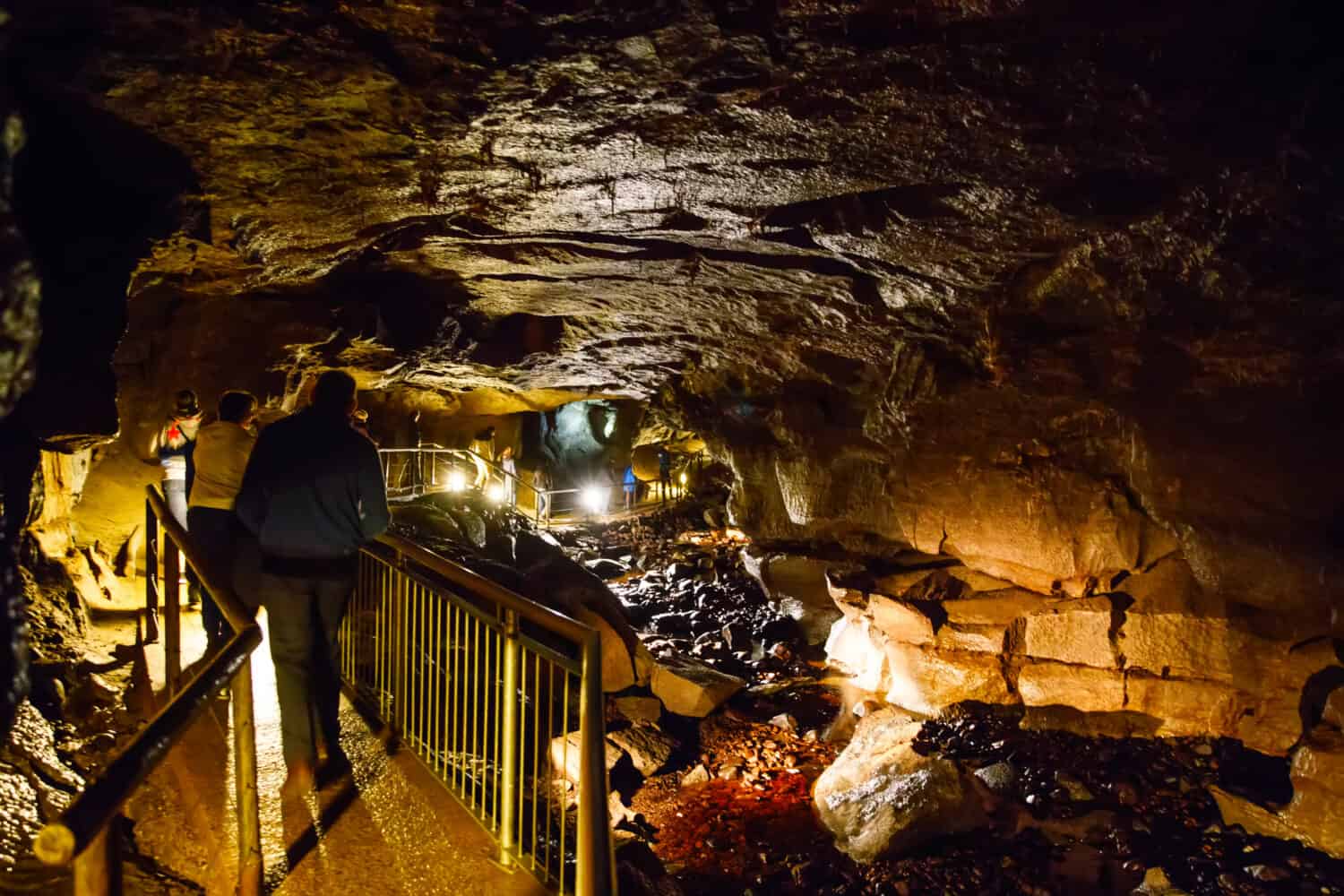
Nestled within the renowned Cuilcagh Lakelands UNESCO Global Geopark, this captivating site offers an unforgettable exploration into the mysteries of nature.
©Irina Wilhauk/Shutterstock.com
6. Skocjan Caves, Slovenia
Discover the breathtaking Škocjan Caves in Slovenia, a stunning network of limestone caverns stretching six kilometers. Nestled within Kraski Landscape Park, this underground wonder boasts Europe’s largest subterranean gorge and earned UNESCO World Heritage status in 1986. Each year, nearly 90,000 visitors explore these captivating caves.
Choose from three unique ways to experience the caves:
- A guided tour through the underground canyon
- Tracing the Reka River below ground
- Strolling along the surface of the Škocjan Education Trail
Embark on the famous 3km guided tour through the underground canyon, where you’ll encounter fascinating features like the Silent Cave adorned with stalactites and the Great Hall housing the “Giant” and “Organ” stalagmites. Continue to Europe’s largest gorge and marvel at the peculiar limestone formations in Bowls Hall.
Alternatively, follow the Reka River underground independently or with a guide. Beginning at the natural entrance beneath Škocjan village, this 1.5km walk takes you through the Big Collapse Doline and Tominc Cave, an area rich in archaeological discoveries. Explore the surface depressions called dolines, which serve as habitats for endangered birds and bats.
Lastly, the Škocjan Education Trail offers a 2km circular walk above ground, encompassing the Big and Little Collapse Dolines and nearby villages. Like the Reka River route, opt for a guided tour or wander at your own pace.
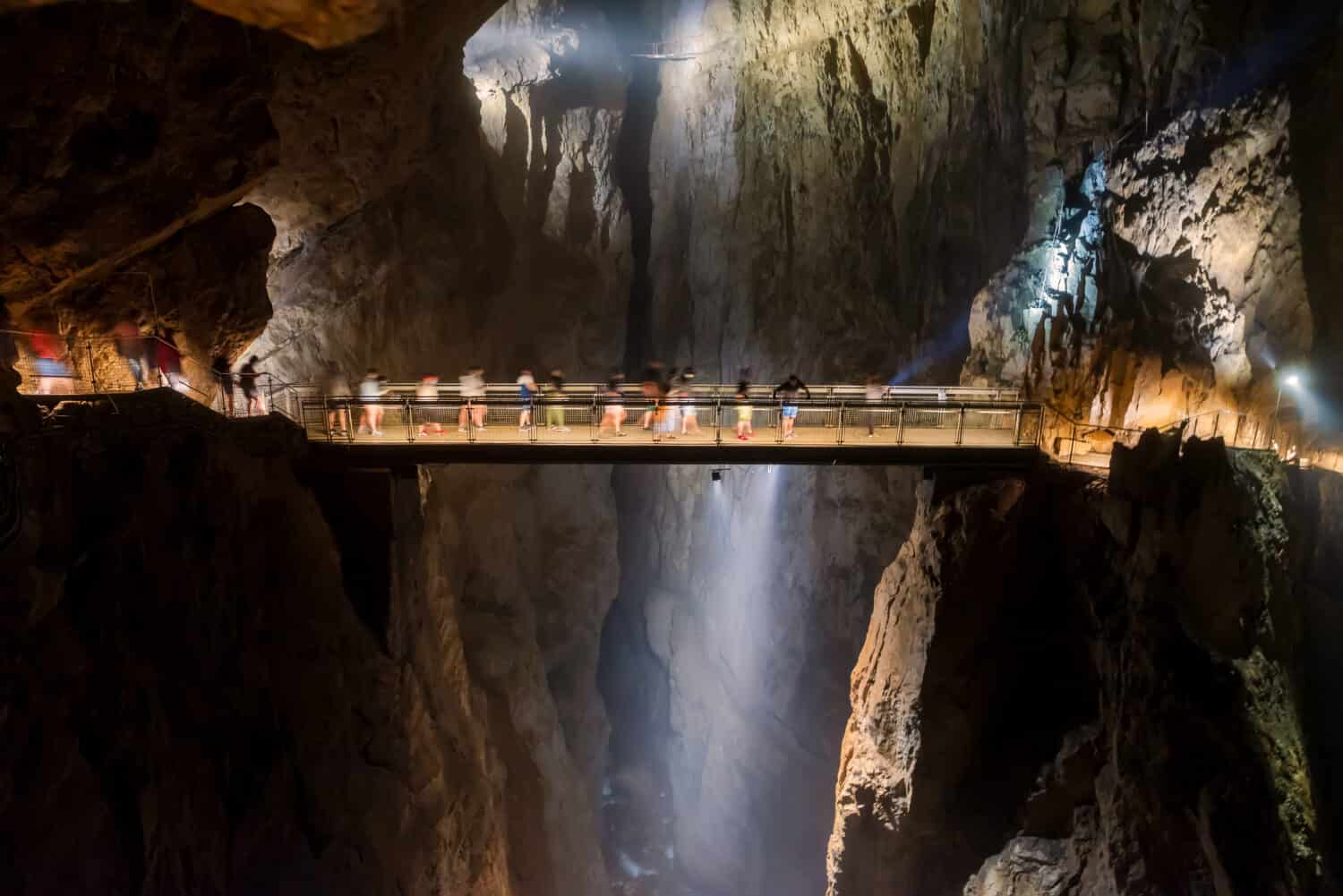
Recognized as a UNESCO World Heritage site, these enchanting caves beckon nearly 90,000 visitors annually to witness their awe-inspiring beauty.
©Geza Kurka_Hungary/Shutterstock.com
7. Eisriesenwelt Ice Cave, Austria
Nestled within Hochkogel Mountain in Werfen, Austria, is Eisriesenwelt, the world’s largest ice cave. It stretches an impressive 26 miles (42km) through the Tenneggebirge section of the Alps. In English, Eisriesenwelt means “World of the Ice Giants.” The cave’s first 0.62-mile (960m) is covered in ice, and this area is open to visitors. Eisriesenwelt boasts stunning ice formations and frozen waterfalls, making it a breathtaking spelunking destination.
The best time to visit Eisriesenwelt is during its official season, from May 1st to October 26th. Ideally, choose a hot and sunny day for your visit. This way, you can experience the striking contrast between the cave’s interior and exterior temperatures. Plus, you’ll be treated to an incredible view of the Salzach Valley on clear days.
To reach Eisriesenwelt, head to Werfen, a picturesque village about 40km south of Salzburg. Driving is the most convenient option, taking either the trunk road from Salzburg or the Tauern autobahn (A10). Alternatively, you can catch a train to Werfen station.
Before visiting Eisriesenwelt, keep these points in mind:
- Dress warmly and in layers, as the cave’s temperature remains below freezing even in summer.
- Be prepared for a 124m ascent to the cave entrance. Ensure you are in good physical health.
- Wear sturdy shoes with a good grip for navigating the narrow, slippery paths inside the cave.
- Remember that photography and filming are strictly prohibited.
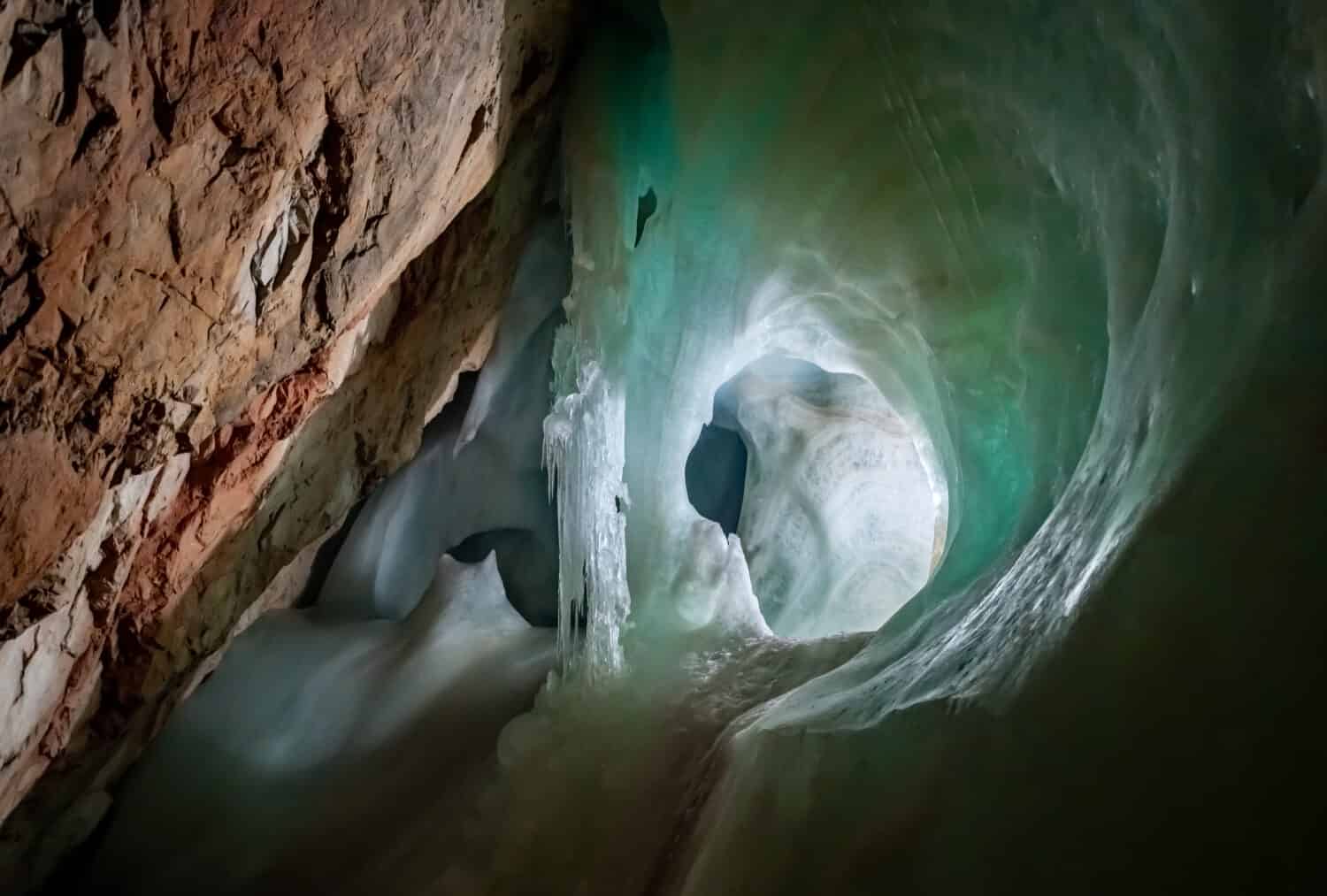
The majestic Eisriesenwelt is the world’s largest ice cave, nestled within Hochkogel Mountain, Austria.
©ON-Photography Germany/Shutterstock.com
8. Aggtelek National Park Caves, Hungary
Located in northern Hungary, Aggtelek National Park is a stunning destination for cave enthusiasts. Bordering Slovakia, this expansive park spans 76.80 square miles (198.92 sq km) and boasts an incredible underground world.
The park’s beauty lies in its lush wilderness, diverse wildlife, and extensive cave system. With over 280 caves scattered throughout the area, visitors can explore various sizes and unique cavern features, all set in picturesque limestone terrain.
Aggtelek Karst, along with the Slovak Karst across the border, forms a UNESCO World Heritage Site, adding to the allure of these captivating caves. Furthermore, the rich cultural heritage of Aggtelek includes castles, palaces, forts, and museums, making it a must-visit location.
Above ground, the park offers thrilling opportunities for wildlife spotting. Watch for elusive species like gray wolves, Eurasian lynx, red deer, and wild boars. Additionally, birdwatchers will delight in sightings of the eastern imperial eagle, saker falcon, kingfisher, and more.
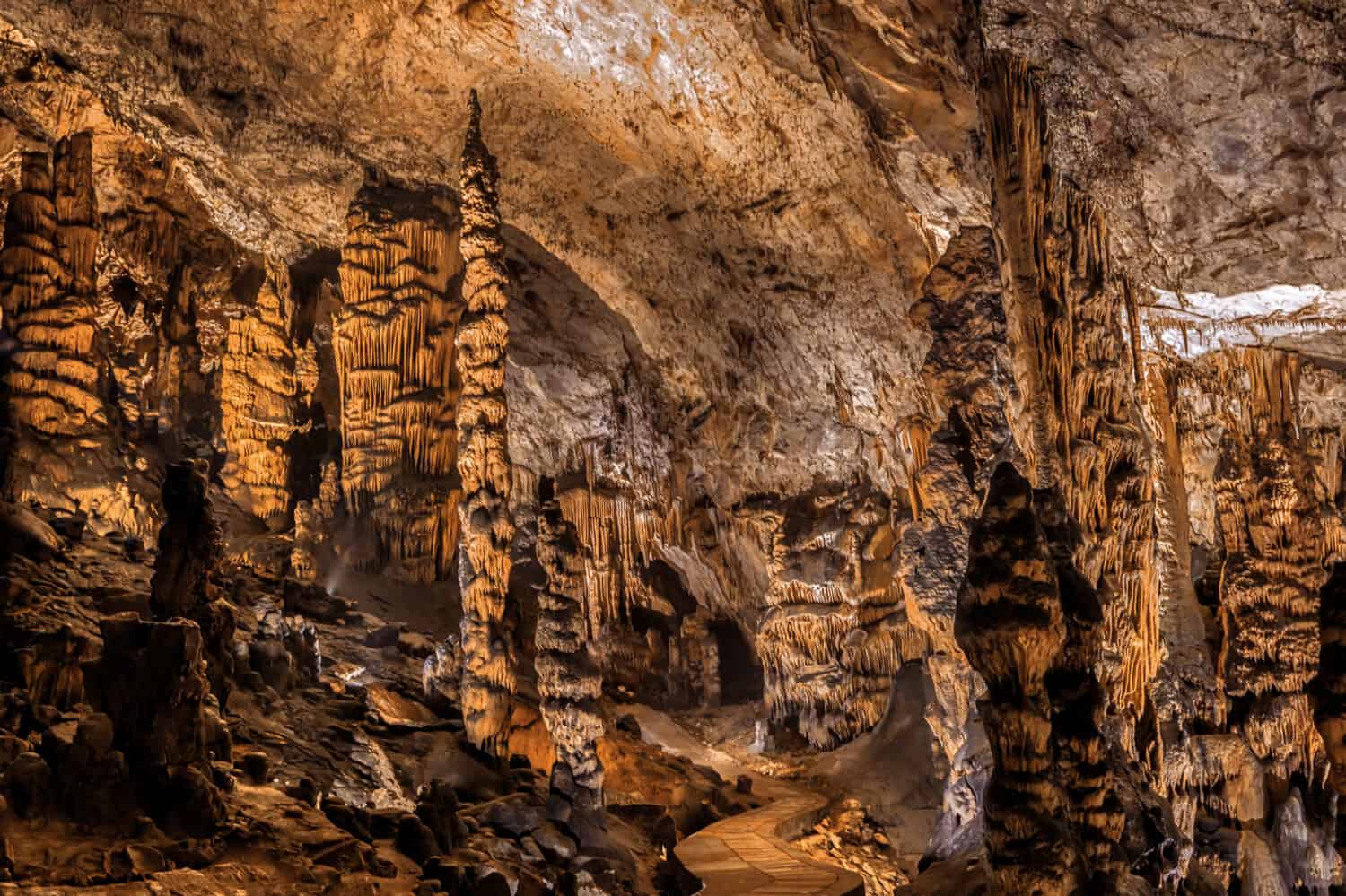
The Aggtelek National Park Caves has over 280 caves to discover, each offering unique features in a breathtaking limestone landscape.
©Tainar/Shutterstock.com
9. Vatnshellir Cave, Iceland
Imagine exploring the captivating Vatnshellir Cave in the heart of the awe-inspiring Snæfellsjökull National Park. Just a 10-minute drive from the quaint village of Hellnar, prepare to embark on an unforgettable journey. Upon arrival at the base near the cave, your friendly guide will supply essential equipment, such as:
- A helmet
- A headlamp
Remember to wear comfortable, sturdy footwear for traversing the volcanic rock. After a brief safety talk, descend the spiral staircase into an underground wonderland.
Following the lava flow path, venture 200 meters into a vast cave 35 meters beneath the Earth’s surface.
Be amazed by the following:
- Vibrant, rainbow-colored volcanic rocks
- Fascinating petrified lava formations
While the cave walk is relatively easy, some climbing is involved, so ensure you’re in good physical health.
Once you reach the cave’s depths, experience a moment of true darkness as everyone turns off their lights. Absolute pitch blackness is a profound and slightly unsettling sensation in today’s illuminated world. This is an experience you will never forget. You can continue exploring secret chambers hidden within the cave before ascending to the world of light. Once in light, you will cherish your incredible underground adventure.
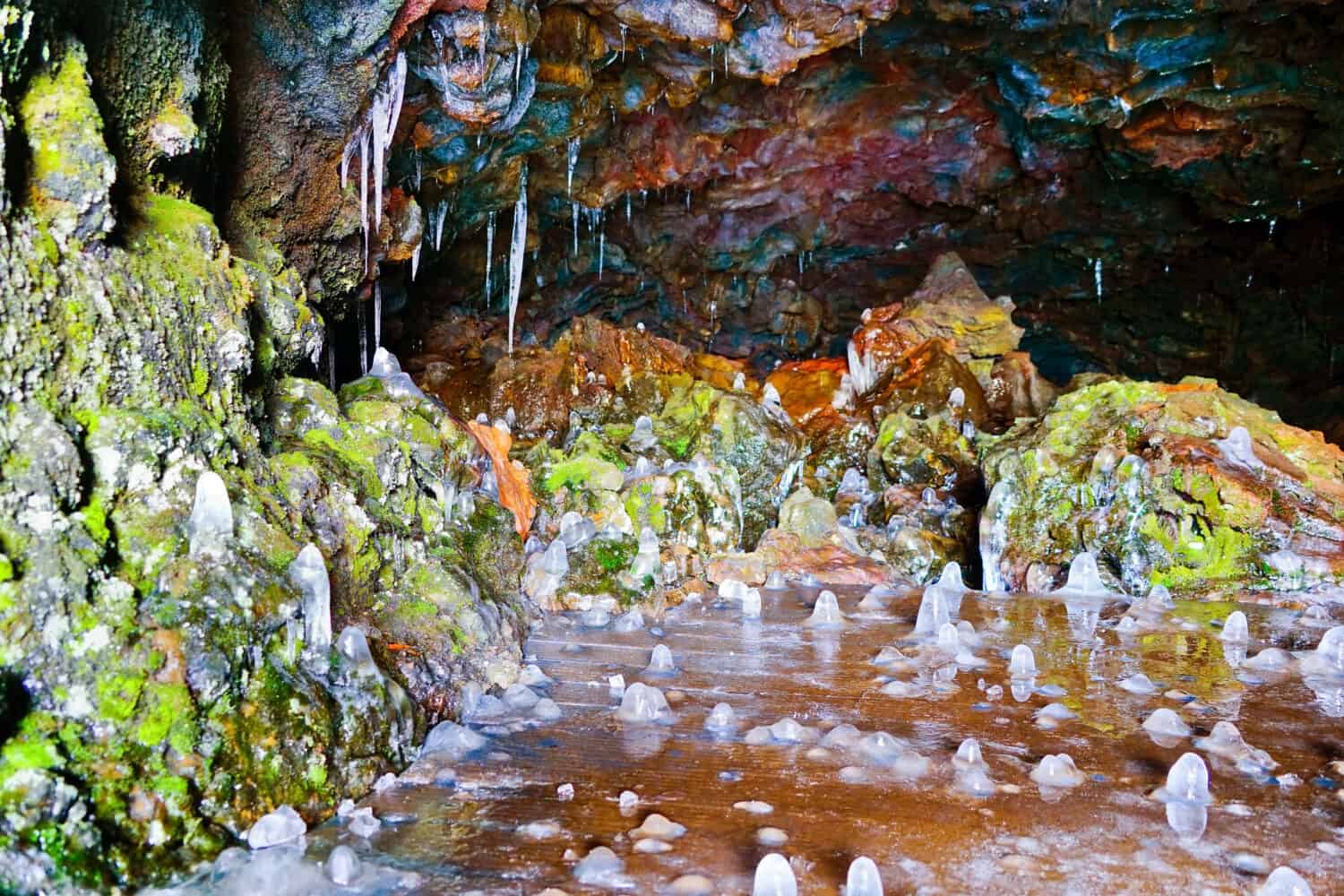
The Vatnshellir Cave, Iceland, is a 10-minute drive from the quaint village of Hellna.
©Javen/Shutterstock.com
10. Postojna Cave, Slovenia
Postojna Cave, a breathtaking gem in Slovenia, ranks among Europe’s most unique caves. This awe-inspiring cave system spans 24 kilometers and is two million years old. The Pivka River flows through an underground tunnel near the entrance, masterfully carved out caverns, halls, and passages.
Visitors embark on a 1½-hour tour, exploring 5 kilometers of the cave system. An electric train covers 3.2 kilometers of the journey, providing a thrilling experience. With temperatures ranging from 46°F to 50°F and 95% humidity, wearing warm clothes and sturdy shoes is advisable.
The tour starts with an exciting train ride to the Great Mountain cavern, reminiscent of a secret lair in a spy movie. From there, knowledgeable guides lead groups through tunnels, halls, galleries, and caverns. They share with the group captivating stories. Audioguides offer additional language options for a more inclusive experience.
Dry galleries within the cave showcase an array of unique stalactite formations. These include needle-like shapes, enormous icicles, and delicate spaghetti strands. Stalagmites take on familiar forms as well. Other peculiar formations create columns, pillars, and translucent curtains resembling bacon rashers.
The journey continues across the Russian Bridge. This was built by prisoners of war in 1916. It takes you through the 500-meter-long Beautiful Caves. Witness the beauty of two million old, ribbon-shaped stalactites and stalagmites.
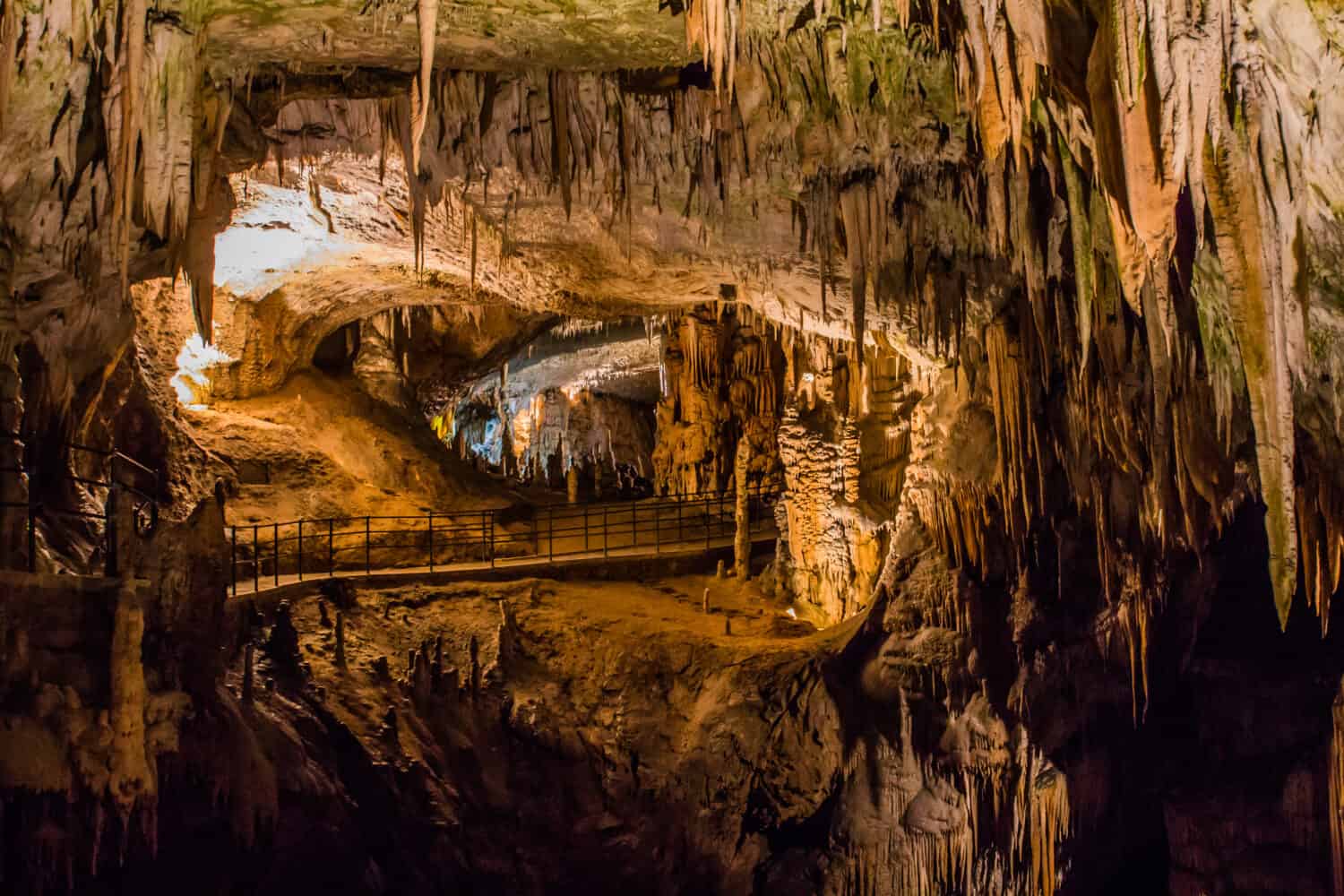
The Postojna Cave is Europe’s unique gem, with its awe-inspiring caverns and passages carved over two million years by the Pivka River.
©John_Silver/Shutterstock.com
Unearth Europe’s Subterranean Marvels
Europe offers a myriad of awe-inspiring subterranean wonders that are waiting to be discovered. Explore both well-known locations and off-the-beaten-path gems. The continent’s diverse landscape provides endless opportunities for the same.
These fantastic caves showcase the beauty of nature’s creations. They serve as a testament to the rich history and geological processes that have shaped the region over time. So, get ready to embark on an unforgettable journey beneath Europe’s surface. Experience enchanting underground realms and create memories that will last a lifetime.
The photo featured at the top of this post is © Manon van Goethem/Shutterstock.com
Thank you for reading! Have some feedback for us? Contact the AZ Animals editorial team.







